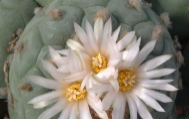Seed Study
A study on the flowering and reproduction behavior of the genus Lophophora
The aim of this study is to find out how the different species and the different locations of the genus Lophophora differ in their reproduction especially among themselves. It should also be found out how closely the individual species and locations are related to each other.
Lophophora is the only genus of the cactus known to me that blooms throughout the whole growing season. Therefore, flowers and fruits are often seen on the plants at the same time. One exception is the newly discovered Lophophora alberto-vojtechii. This flowers first very early in the spring and only once; the few fruits are whitish-green and remain hidden deep in the vertex.
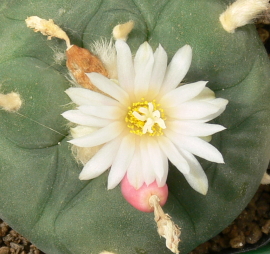 |
| Lophophora diffusa |
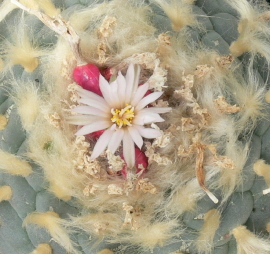 |
| Lophophora frcii var. albiflora |
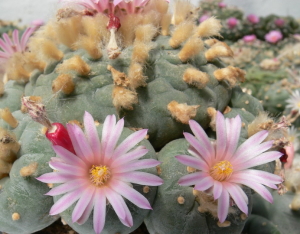 |
| Lophophora fricii |
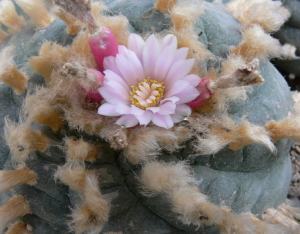 |
| Lophophora williamsii, Sierra Paila |
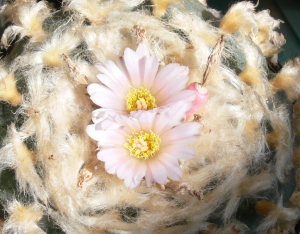 |
| Lophophora williamsii var texana |
The number of flowers depends very much on how much water the plants get during growing season. From the flowers at the beginning of the growing season, the first fruits appear after about 8 weeks. Of the flowers at the end of the growing season, the fruits often appear only in the coming year.
So far, 2 species with over 30-year-old plants have been recorded within a year. It should be noted that these values are based on a Central European climate in which the plants have 5-6 months rest. Depending on the climate and humidity, this value can certainly fluctuate considerably. Furthermore the data can certainly couldn´t be compared with the location conditions.
The fruit of Lophophora is a small, club-shaped tube without pulp. The flower remnant is attached to the fruit. The color of the fruits differs depending on the species from whitish to red, in Lophophora fricii intense red.
 |
The seeds have a small, adherent sugar attachment (funiculus, umbilical cord) which is supposed to serve the distribution in nature by ants, which also speaks for the partially, very small, island-like occurrence.
The ants remove the sugar attachment and seeds from the fruit and bite off the seeds on the way to the nest. For the ants, only the sugar attachment is of interest; they can not use the seeds.
While the large plants of Huizache, San Luis Potosi have the smallest seeds, the seeds of the southern and northern populations are larger. The number of seeds per fruit seems to depend on how many ribs the individual populations have. Thus, the southern locations rarely have more than 8 ribs and more seeds per fruit than the northern plants. The northern plants, on the other hand, usually have up to 13 ribs and fewer seeds per fruit.
Lophophora köhresii produced 1820 seeds in one year with 52 flowers:
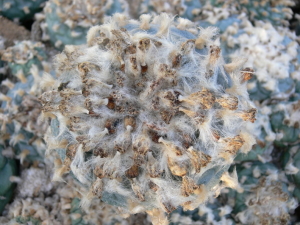 |
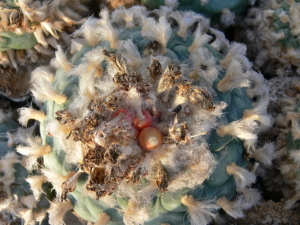 |
Lophophora williamsii var. Texana produced 576 seeds in one year with 48 flowers:
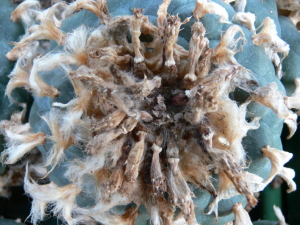 |
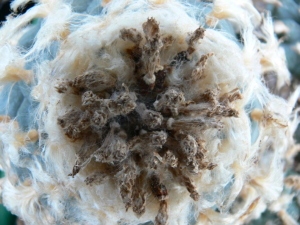 |
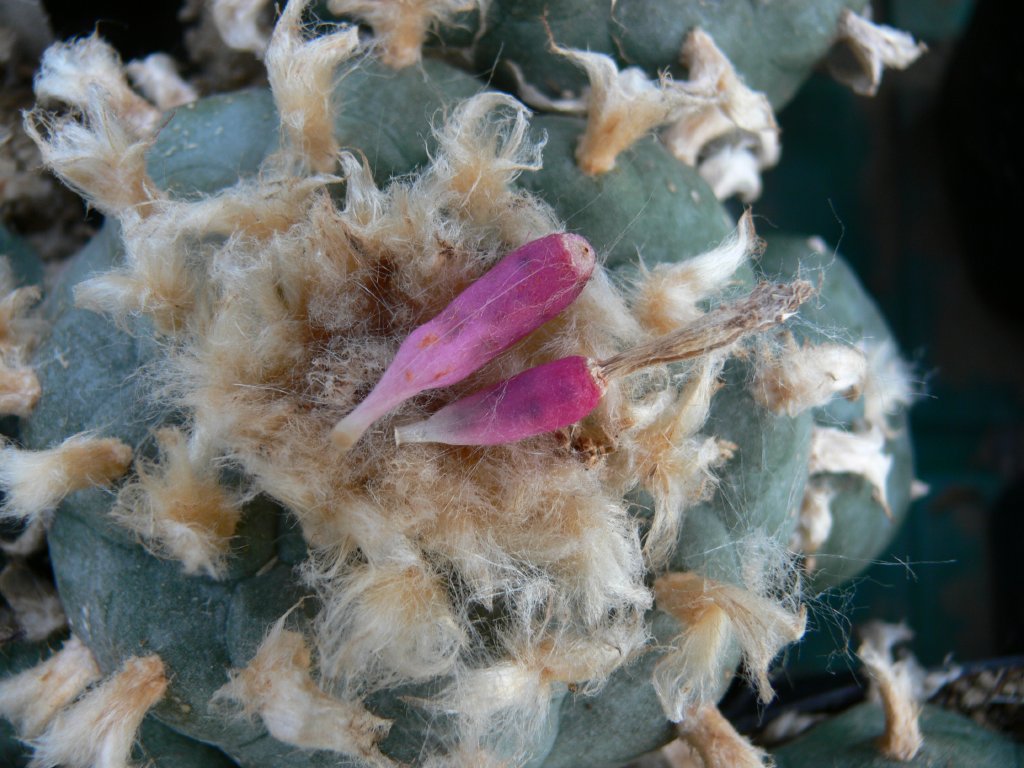 |
With Lophophora williamsii var. texana it was striking that there are considerable differences between individual plants with regard to the number of seeds per fruit. Individual plants have fruits with 12 to 26 seeds, other plants have generally produced only up to 4 seeds per fruit.
The seeds per fruit were determined from the average of 100 fruits.
It is interesting that the plant size and the size of the seeds are inverse.
Thus, the small Lophophora koehresii and alberto-vojtechii have the largest seeds, whereas the largest Lophophora williamsii of Huizache produces the smallest seeds. Furthermore, it is interesting that not only the different species form different seed sizes, but also that the different locations vary within Lophophora williamsii and Lophophora fricii. For the seed size, the weight of 1000 seeds was determined. The individual data are summarized in the table. All Lophophora have fine spines after germination in the juvenile age.
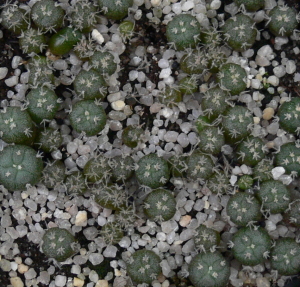 |
Some Lophophora are self-fertile and some are self-sterile (both parents are needed to pollinate the flower).
Measurement results of the Lophophora study in tabular form:
